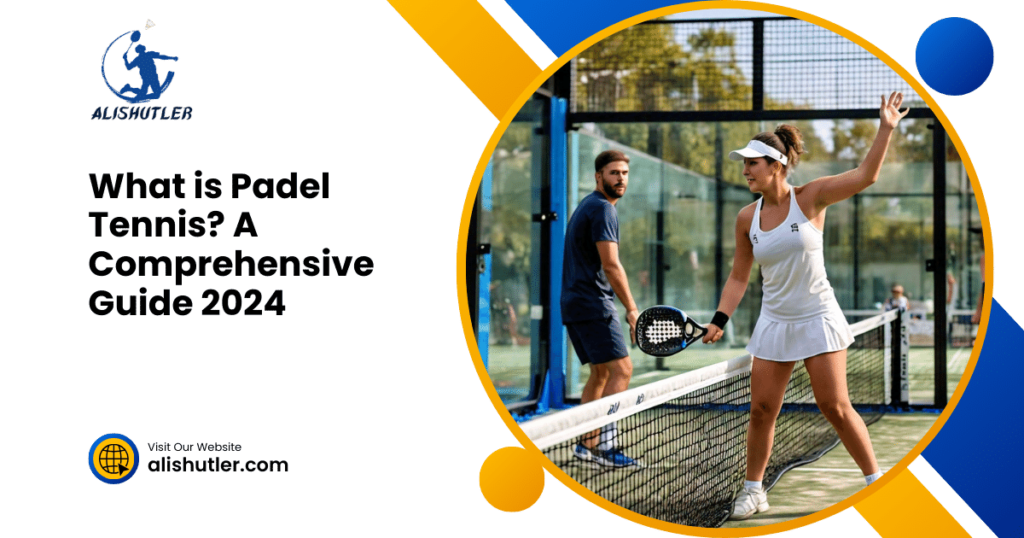Curious about what is Padel tennis? Unlike traditional tennis, Padel is played on a smaller court with walls around it. This fast-paced sport combines elements of tennis and squash, offering a unique playing experience. Wondering how to get started or where to find courts for the conventional tennis playing field? Stay tuned as we dive into the ins and outs of Padel tennis, from rules and equipment to strategies for success. Whether you’re a seasoned player or a newbie looking to try something new, this guide will help you grasp the essence of this exciting sport.
Key Takeaways
- Try It Out: If you’re curious about Padel Tennis after learning about its origins and basics, consider trying it out at a local club or facility to experience the game firsthand.
- Understand the Differences: Differentiate between Padel Tennis and Traditional Tennis by noting key distinctions in court size, equipment, and gameplay. Knowing these variances can enhance your appreciation for both sports.
- Get Familiar with Court Setup: Familiarize yourself with Padel Court Specifications to understand the dimensions, materials, and layout required for playing this unique racquet sport.
- Choose the Right Gear: Selecting the appropriate racket and ball for Padel Tennis is essential for optimal performance. Look for equipment that suits your playing style and skill level.
- Know the Rules: Learn the Scoring in Padel to grasp how points are earned and matches are won. Understanding the scoring system will help you follow games more effectively and participate confidently.
- Practice Makes Perfect: As with any sport, regular practice is key to improving your skills in Playing Padel Tennis. Dedicate time to honing your technique and strategy on the court to enhance your overall gameplay.
Origins and Basics
Historical Roots
Padel Tennis, originating in Mexico in the 1960s, quickly gained popularity across Spain. It was initially played on vacant tennis courts, utilizing the surrounding walls.
Gameplay Differences
In Padel Tennis, players use solid paddles rather than racquets, and the court is smaller with glass walls surrounding it. The ball can bounce off these walls during play, adding an exciting element of strategy.
Key Rules and Fundamentals
The game is typically played in doubles format, where the ball must bounce once on each side before being returned. Players are not allowed to volley the ball (hit it without letting it bounce first). Serving must be underhand.
Padel vs. Traditional Tennis
Equipment
In Padel Tennis, players use paddle rackets made of composite materials like carbon fiber, with perforated surfaces for better grip. In contrast, conventional tennis players utilize strung rackets made of graphite or aluminum.
The paddle racket in Padel is smaller and solid, favoring control and precision over power. On the other hand, the tennis racket has a larger head size and various string patterns, enabling more powerful shots but requiring greater skill to control.
Scoring System
In Padel Tennis, matches are typically played as the best of three sets. The scoring system follows the same format as traditional tennis, with points counted as 15, 30, 40, and game. However, there’s a key difference in scoring known as “no-ad scoring.”
In no-ad scoring, the receiving team chooses which side to receive serve on game point. If they win the point, they get the game; if they lose it, the serving team wins. This fast-paced system adds intensity to each point.
Physical Demands and Skill Sets
Padel Tennis requires a unique blend of skills compared to traditional tennis. Players need quick reflexes due to the enclosed court walls that allow for strategic bank shots. Teamwork is crucial as doubles play is common in Padel.
While both sports demand agility and endurance, Padel places more emphasis on touch and finesse due to its shorter court dimensions. Players must master lobs, volleys, and drop shots to outsmart opponents within close proximity.
Court and Equipment
Padel Court
Padel tennis is played on a tennis court with walls around it. The dimensions of a padel court are smaller than those of a traditional tennis court.
The padel court is usually about 1/3 the size of a traditional tennis court, measuring approximately 20m x 10m. The field has walls made of glass or solid materials, such as concrete.
Equipment Needed
To play padel tennis, you require specific equipment like a padel racket and balls. Padel rackets are quite different from traditional tennis rackets.
A padel racket features small holes in the surface to reduce air resistance and provide more control over shots. These rackets are also shorter in length than traditional tennis rackets.
Differences in Court Layout
One significant difference between padel tennis and traditional tennis lies in the court layout. In padel, players can use the walls to play shots, adding an extra dimension to the game.
The presence of walls in padel allows for unique strategies and shot selections that are not possible in traditional tennis. Players must adapt their game to utilize the walls effectively.
Unique Rackets and Balls
Padel rackets have a solid frame with no strings, making them more durable and suitable for the quick-paced nature of the game. The balls used in padel are similar to tennis balls but have less pressure, allowing for slower gameplay.
The combination of specialized rackets and balls enhances the gameplay experience by enabling players to execute precise shots with ease.
Padel Court Specifications

Dimensions
Padel tennis courts are 10 meters wide and 20 meters long, enclosed by 3-meter-high walls made of glass or mesh. The playing area is divided into two equal parts by a net.
The specific dimensions of a padel court play a crucial role in the game. The compact size allows for quick and dynamic gameplay, promoting close interactions between players.
Materials Used
The walls surrounding a padel tennis court are typically constructed using tempered glass or metal mesh. These materials provide durability while ensuring visibility for spectators.
The net in the middle of the court is usually crafted from high-quality nylon or polyester, designed to withstand intense gameplay and weather conditions.
Significance of Specifications
The precise dimensions and materials used in constructing a padel tennis court significantly impact the overall playing experience. The 3-meter-high walls help keep the ball in play, encouraging strategic shots and rallies.
The use of tempered glass or metal mesh ensures player safety while maintaining visibility, allowing spectators to enjoy the game without obstruction.
Racket and Ball Details
Racket
Padel Tennis rackets are specifically designed for this fast-paced racket sport. They are smaller than tennis rackets, with a solid surface made of composite materials. The shorter length of Padel rackets allows players to maneuver quickly and execute precise shots.
The lightweight nature of these rackets enables players to maintain control during intense rallies. The grip size is crucial in Padel Tennis, as it affects the player’s comfort and ability to handle the racket effectively. Players can choose from various grip sizes based on their preferences.
Ball
Padel Tennis balls have a distinctive design compared to traditional tennis balls. They are slightly smaller and have a lower bounce rate, making them ideal for the enclosed Padel courts. The rubber material used in these balls provides the perfect balance between bounce and speed.
The visibility of Padel Tennis balls is enhanced by their bright colors, allowing players to track the ball easily during fast-paced exchanges. The durability of these balls ensures consistent performance throughout extended rallies on the court.
Impact on Gameplay
The choice of racket and ball significantly influences gameplay dynamics in Padel Tennis. A racket with the right weight and balance can enhance a player’s control over shots, enabling them to execute precise volleys and smashes. Conversely, using an unsuitable racket may lead to inconsistencies in shot accuracy.
Opting for the correct type of ball is equally vital in Padel Tennis matches. Balls with optimal bounce characteristics facilitate smooth rallies and strategic shot placements. Players must adapt their playing style based on the specific attributes of the chosen ball to maintain a competitive edge during games.
Court Dimensions
Size Importance
The size of a padel tennis court is crucial for gameplay, measuring 10 meters in width and 20 meters in length. The height of the court’s walls is also significant at 3 meters. These dimensions play a vital role in shaping the dynamics of the game.
The specific court dimensions in padel tennis are essential as they create a unique playing environment. The compact size of the court compared to traditional tennis courts leads to faster-paced rallies and more intense gameplay. Players must adapt their strategies due to the limited space available, requiring quick reflexes and precise shots.
Enclosed Court Strategy
The enclosed design of a padel tennis court impacts gameplay significantly. With walls surrounding the court, players can use them to their advantage by incorporating tactics such as wall shots and rebounds. These elements add an extra layer of complexity to the game, allowing for strategic plays that are not present in traditional tennis.
The enclosed nature of padel tennis courts changes how players approach each point. Utilizing the walls effectively can catch opponents off guard, leading to unpredictable shots and strategic advantages. Players need to master not only hitting the ball over the net but also utilizing the walls strategically to outmaneuver their opponents.
Small Court Benefits
The smaller size of a padel tennis court offers several advantages that contribute to its popularity. Due to its compact dimensions, matches tend to be shorter and more action-packed, making it an ideal choice for those seeking fast-paced sports experiences. The reduced court size promotes quick exchanges and dynamic plays, keeping both players and spectators engaged throughout the match.

- Promotes quicker reactions
- Enhances player agility
- Increases intensity levels
Scoring in Padel
Points System
In Padel Tennis, points are scored similarly to tennis, with matches typically played as the best of three sets. Each set is won by the first team to reach six games with a margin of two games. If the set reaches 6-6, a tiebreaker is played to determine the winner.
How Points are Earned
Points in Padel Tennis are earned when the opposing team fails to return the ball before it bounces twice on their side of the court. The serving team can score directly by hitting the ball into specific areas on the opponent’s court, known as “winning boxes.”
The serving team must serve underhand and hit the ball diagonally cross-court into the opposite service box. The receiving team must let the ball bounce once before returning it, creating strategic opportunities for both teams.
Strategic Nuances
One unique aspect of Padel Tennis scoring is that points can only be scored by the serving team. This rule adds an element of strategy and skill to the game, as teams must alternate serving every game and work together to maintain control of rallies.
The “No-Volley Zone,” also known as “the kitchen,” further enhances the tactical aspects of scoring in Padel Tennis. Players are not allowed to hit volleys (striking the ball before it bounces) while inside this zone, encouraging clever shot placement and teamwork.
Pros and Cons
- Pros:
- Simple scoring system similar to tennis.
- Encourages teamwork and strategic play.
- Adds excitement with tiebreakers in case of close sets.
- Cons:
- Serving team advantage may lead to quicker point accumulation.
- Requires understanding of specific rules for scoring points effectively.
Playing Padel Tennis

Starting Out
To begin playing Padel Tennis, it’s essential to understand the basic rules and court dimensions. Start by learning the scoring system, which is similar to tennis but with some variations. Joining a beginners’ group or taking lessons can help you grasp the fundamentals quickly.
Getting comfortable with the padel racket is crucial. It’s smaller and easier to handle than a tennis racket, allowing for better control and maneuverability on the court. Practice holding the racket correctly and getting a feel for its weight and balance.
Essential Skills
Mastering the underarm serve is key in Padel Tennis. Unlike traditional tennis, where overhead serves are common, padel requires serving underarm due to court limitations. Practice your underarm serves to ensure accuracy and consistency during games.
Developing good hand-eye coordination is vital for success in Padel Tennis. The game involves quick reactions to fast-paced rallies and strategic shots. Regular practice drills focusing on coordination can significantly improve your gameplay.
Social and Competitive Aspects
Padel Tennis is known for its social nature, making it a great way to meet new people and make friends. Joining a local club or league can provide opportunities to connect with other players who share your passion for the sport.
The competitive aspect of Padel Tennis adds an exciting dimension to the game. Participating in doubles matches allows for teamwork and strategy development while also creating a dynamic playing environment. The pressure of playing in a team setting can enhance your skills and decision-making abilities on the court.
Pros:
- Easy to learn for beginners
- Offers a mix of physical activity and social interaction
- Suitable for players of all ages and skill levels
Cons:
- Requires specific equipment (racket, balls, appropriate footwear)
- Limited availability of courts in some regions
Summary of What is Padel Tennis?
You’ve now grasped the essence of padel tennis, understanding its origins, differences from traditional tennis, court specifications, equipment details, dimensions, and scoring system. With this knowledge, you’re well-equipped to step onto the padel court and enjoy this exciting sport. Padel offers a unique blend of strategy, skill, and teamwork that can elevate your tennis experience to new heights.
rab a friend, head to the nearest padel court, and give this dynamic sport a try. Whether you’re a seasoned tennis player or new to racket sports, padel tennis promises an engaging and fun-filled experience for you and your playing partner. Get ready to serve, volley, and score points in this fast-paced game that’s taking the world by storm!
Frequently Asked Questions
What are the origins of padel tennis?
Padel tennis originated in Mexico in the 1960s and quickly gained popularity in Spain. It is a mix of tennis and squash, played on a smaller court enclosed by walls. The sport has since spread globally due to its accessibility and fun gameplay.
How does padel tennis differ from traditional tennis?
Padel tennis is played on a smaller court with walls around it, allowing players to use the walls as part of the game. It is typically played in doubles format, promoting teamwork and strategy. The scoring system and rules also have differences compared to traditional tennis.
What are the key court specifications for padel tennis?
A standard padel court is 20 meters long and 10 meters wide, surrounded by glass walls at least 3 meters high. The service box is marked closer to the net, and there is a clear separation between the playing area and the surrounding walls.
What equipment is needed for playing padel tennis?
Players require a padel racket, which is solid with small holes like a strainer, and a padel ball similar to a tennis ball but less pressurized. Comfortable sports attire and appropriate footwear that provides good traction on artificial grass surfaces are also essential.
How is scoring done in padel tennis?
Scoring in padel follows a similar format to traditional tennis with points awarded as 15, 30, 40, followed by game point. Games are won by having at least a two-point lead over opponents. Matches are usually played as best-of-three sets.
Can anyone play padel tennis regardless of skill level?
Yes, padel tennis is suitable for players of all skill levels, from beginners to advanced. The smaller court size makes it easier for beginners to pick up the game quickly while still offering challenges for more experienced players looking to improve their skills.



